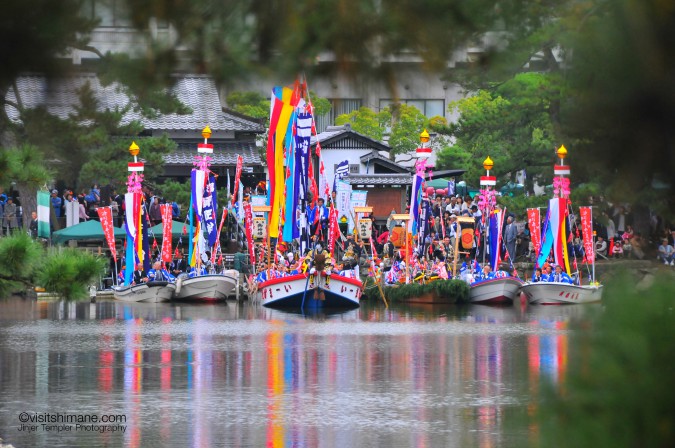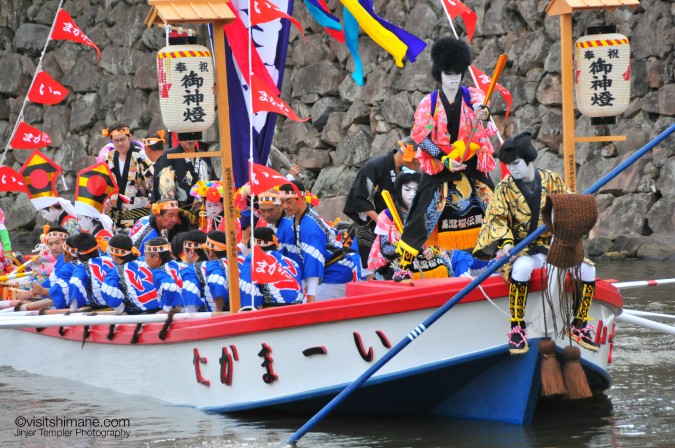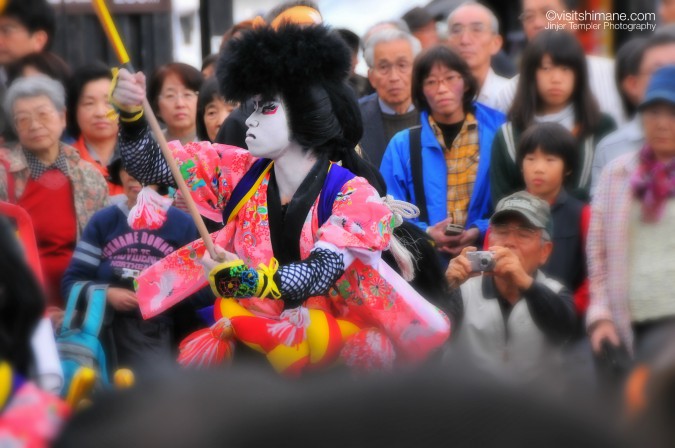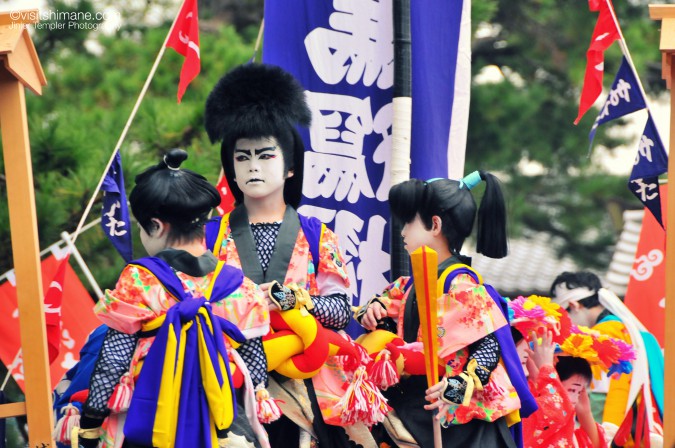
The origin of this Matsue festival concerns the first feudal lord of the area, Matsudaira Naomasa, who during a famine successfully prayed for a good harvest. (This photo and all others courtesy Visit Shimane site.)
Today being Easter Sunday, it’s a good occasion to reflect upon the similarities in the European annual round and that of Shinto. Both lie in the northern hemisphere of course, so not surprisingly spring fertility rites take place at similar times (one thinks today of Easter bunnies and Easter eggs in particular). Moreover, both traditions celebrate the produce of the harvest in autumn.
Japanese culture is known for its tendency to adopt practices from other countries and make them their own, often improving them in the process. In a fascinating blog article, Megan Manson has written a thoughtful piece on the intriguing question of why Christmas, Valentine’s and Halloween have been taken up by Japanese in a big way, yet Easter has (so far at least) been completely ignored. Great question, and she gives a great answer.
Below is a description of what might facetiously be called an Easter parade – Shinto-style. It’s a ‘resurrection’ of an old festival, in which dance features prominently – a reminder of the oft-quoted anecdote told by Joseph Campbell about a priest who declared that in Shinto ‘we dance’. And surely for an Easter Sunday, the Lord of the Dance himself would be happy with that…

Colourful banners and scrolls accompany dancers in kabuki costumes.
****************
Rare Shinto ritual on the waterways thrills crowd in Matsue
MATSUE–A centuries-old Shinto ritual featuring a colorful boat procession to wish for a bountiful harvest sailed the waters on March 26 near Matsue Castle, with a troupe of singers and dancers in traditional costumes performing aboard.
The event by Matsue Jozan Inari Jinja shrine, called Horan Enya and dating to the Edo Period (1603-1867), is famed as one of the nation’s three renowned Shinto rites featuring ships.
A total of nine boats carrying about 70 performers traveled along a moat within the castle walls during the rite. The ritual, which is held every 10 years, was initially scheduled for 2019.
But it was moved up to this year to mark the designation of Matsue Castle as a national treasure, which was announced last year, and the 350th anniversary of the death of Matsudaira Naomasa, head of the feudal Matsue Domain.
In the event, performers danced in a manner similar to Kabuki performers aboard their boats as spectators waited to capture the rare spectacle with their cameras.

The Shikinen Shinkosai festival of Jozan Inari Shrine (Matsue City) is fondly known to local people as “Horan-enya.”

This Shinto ritual is carried out once every ten years. The next Horan-enya is due to be held in May of 2019.

Thank you once again for the lovely comment on my blog :) Our discussion about the topic inspired this post! And that parade looks incredible…